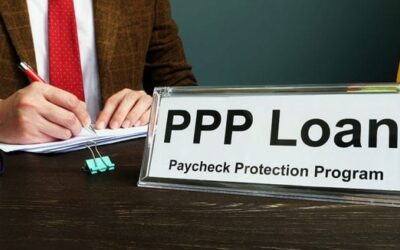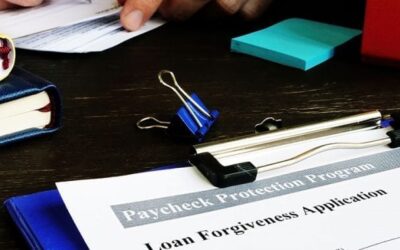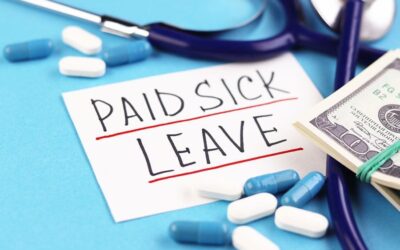The FBI is warning the public to be on the lookout for unemployment benefits fraud. A significant spike has been seen due to COVID-19 related claims filed using stolen identities.
CARES Act Provider Relief Fund Portal Active, Additional Funds Available for Providers
Tips & Best Practices For Documenting Economic Uncertainty and Need for PPP Loan After New Treasury Guidance
Why you Should Allow Staff to Telecommute
Earth Day 2020
Will Your CARES ACT Loan Be Forgiven?
PPP Loan Program To Be Replenished
Remote Work
COVID Local Nonprofit Donations
Telecommuting: Is it Right for You?
Additional Guidance issued for Self-Employed individuals (and partnerships) for PPP Loans
Reopening Your Business During COVID-19
Jun 5, 2020
We are all anxiously awaiting reopening our doors and returning to some sense of normalcy. However, it is important to follow the mandatory guidelines to ensure you are safely and legally reopening. In addition to following the limitations of openings established by the state-specific Phases, there are explicit guidelines established for each industry.
7 Important Changes as a Result of the PPP Flexibility Act
Jun 4, 2020
One of the more popular comments in recent weeks regarding the PPP Loan program by many borrowers has been that the original 8-week window was ultimately too short a period to use the funds. Many borrowers are still unable to resume full or even partial operations, and the short window left many with the prospect of paying employees to not work or not using the funds at all, thereby losing their forgiveness window.
SBA Provides IFR with Limited Guidance on Review Process for Loans
May 26, 2020
Along with an updated IFR (Interim Final Rule) for forgiveness, the SBA also released on Friday, May 22nd an IFR covering the SBA Review Procedures and related borrower and lender responsibilities. Many borrowers have been curious as to what an SBA review or audit of...
8 Key Updates From New SBA Regulations on Loan Forgiveness
May 26, 2020
After releasing the PPP Loan Forgiveness application on May 15, 2020, the SBA has now released additional “Interim Final Rules” or IFR in relation to the forgiveness procedures and regulations. These IFRs will generally carry a higher legal standing than the applications themselves and help to formalize the rules that were presented with the application.
Reference Guide for Updated Main Street Loan Program
May 7, 2020
The Federal Reserve released the first term sheets (and little else) in early April 2020, leaving a comment period open through April 16, 2020. The initial program received over 2,200 comments during this period, and as a result, has undergone some significant changes (including the creation of a 3rd category of loan). The updated release on April 30, 2020 also provided an FAQ to help answer some additional questions that may exist, but many key questions, like how to apply, who is participating, and when the program starts, still exist.
SBA Issues More Guidance on Laid-Off Employees, Extends “Safe Harbor” Repayment Date
May 6, 2020
The SBA and Treasury continued its trickle of new information so far this week, updating their FAQ on May 3rd and again on May 4th with two critical updates for borrowers.
The Paid Sick Leave Law
May 6, 2020
The Paid Sick Leave Law (PSLL) was approved by New York State Governor Andrew Cuomo on April 3, 2020, adding to the initial PSLL that was signed on March 18, 2020. This was codified under section 196-b of the New York Labor Law, and it states that employees may begin accruing sick leave as of September 30, 2020, and using sick leave as of January 1, 2021. This law covers all employers in New York State and gives employees a minimum of 40 hours of paid or unpaid sick leave and a maximum of 56 paid hours, depending on the net income and size of their employer. This law does
The Impact of Government Funding on PPP Loan Forgiveness
May 4, 2020
Many companies and organizations have received their PPP loans, which means that they are in the 8- week forgiveness period. During this 8-week period, any qualified costs are potentially forgivable. There are certain criteria that will dictate the forgivable portion, such as the amount of expenses (forgiveness is limited to the actual qualified expenses for the period – though it is still uncertain if this is calculated on the cash, accrual, or some combination of the two), type of expenses (qualified non-salary expenses cannot exceed 25% of the forgiveness amount), level of staff retained (any drop in staff FTE’s will reduce forgiveness), salary levels paid to staff (a reduction in the salary paid to any employee in excess of 25% will reduce forgiveness); and whether any governmental source is directly funding you for any qualified expenditures.










